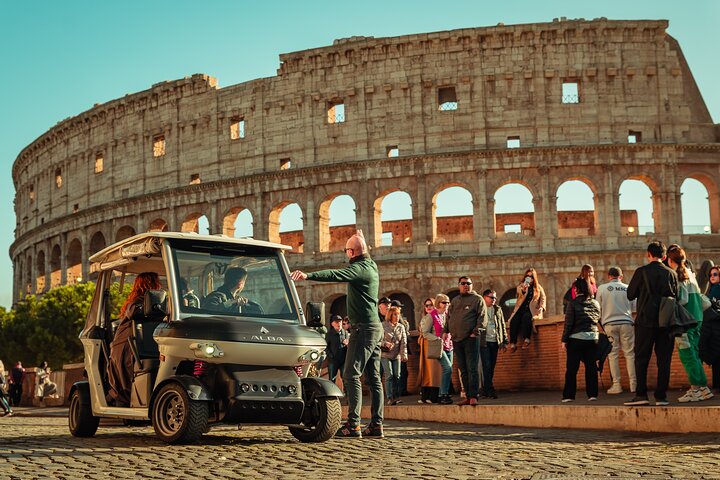Walking Through History: A Journey from the Gladiator’s Gate to Palatine Hill
As a former European history professor, I was drawn to the Colosseum Gladiator’s Gate tour in Rome, eager to explore the ancient ruins with an expert guide. The promise of entering the arena through the gladiator’s entrance and delving into the heart of Roman history was irresistible.
Entering the Arena: A Gladiator’s Perspective
As I stood before the colossal structure of the Colosseum, I couldn’t help but feel a sense of awe. This was not just any entrance; it was the Gladiator’s Gate, a passageway that once echoed with the footsteps of warriors preparing for battle. Our guide, an archaeologist with a wealth of knowledge, led us through this historic portal, offering insights that brought the ancient world to life.
The guide’s explanation of the Colosseum’s architecture and its ingenious engineering was nothing short of fascinating. The trap doors and pulley systems, which facilitated the dramatic entrance of wild beasts, were a testament to Roman innovation. As we stood on the arena floor, I imagined the roar of the crowd and the tension in the air as gladiators faced their fates. The guide dispelled common myths, explaining that gladiators did not always fight to the death, as they were valuable assets. This nuanced understanding of history was precisely what I sought in this Colosseum Tour.
The Heart of Ancient Rome: The Roman Forum
Leaving the Colosseum, we ventured into the Roman Forum, the bustling heart of ancient Rome. Here, the guide’s expertise truly shone. With each step, we were transported back in time, as he pointed out the remnants of shops, temples, and public spaces that once thrived with activity. The guide’s ability to contextualize these ruins within the broader tapestry of Roman history was remarkable.
As we wandered through the Forum, I was struck by the layers of history beneath our feet. The guide explained how the Romans were masters of recycling, repurposing building materials from older structures to create new ones. This practice not only demonstrated their resourcefulness but also provided a tangible connection to the past. The majestic pine trees, which the guide noted were the source of pine nuts, added a touch of natural beauty to the scene.
Ascending Palatine Hill: A View of Rome’s Origins
Our journey concluded with a climb up Palatine Hill, a site steeped in legend and history. According to Roman mythology, this was where Romulus and Remus were discovered by the she-wolf, marking the birthplace of Rome. As we ascended, the panoramic views of the city unfolded before us, offering a breathtaking perspective of Rome’s ancient and modern landscapes.
The guide’s encyclopedic knowledge of the area enriched our experience, as he recounted tales of emperors and the opulent palaces that once graced the hill. The ruins, though weathered by time, still conveyed a sense of grandeur and power. It was a fitting end to a tour that had seamlessly woven together the threads of history, archaeology, and storytelling.
For those who share my passion for history and architecture, this tour is an unmissable opportunity to walk in the footsteps of the ancients. The Roman Forum Tour offers a profound connection to the past, guided by experts who bring the stories of Rome to life. Whether you’re a seasoned traveler or a curious newcomer, this experience will leave you with a deeper appreciation for the eternal city.




















































